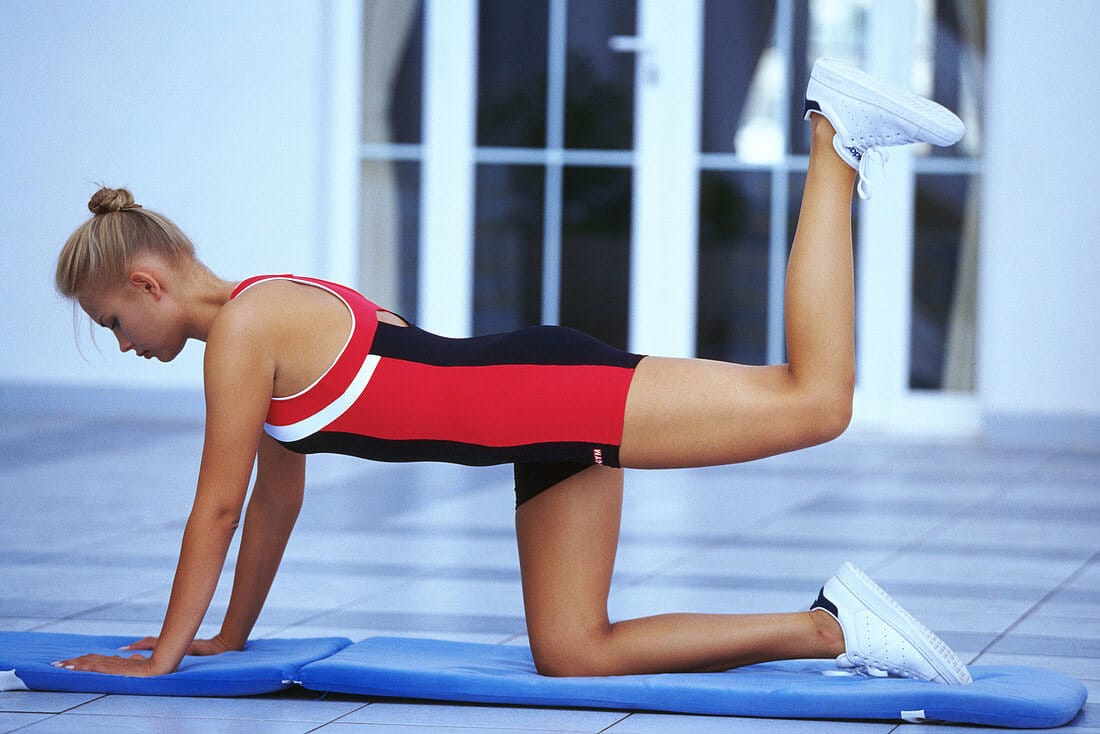
Exploring the Pros and Cons of Calisthenics
We will be exploring the Pros and Cons of Calisthenics, but do you know that around 70% of Americans have embraced bodyweight exercises as their go-to workout? It’s easy to see why.
Calisthenics provides a flexible way to build strength and mobility without the need for pricey gym gear. But, like any fitness approach, it comes with its pros and cons.
As someone who’s navigated my fitness journey, I’ve learned that balancing the benefits of bodyweight training with the potential downsides of callisthenics is crucial. So, let’s explore how callisthenics can impact your health and fitness goals.
What is Calisthenics?

Callisthenics is using your body weight as resistance for exercise. This workout method features a range of movements aimed at enhancing strength, flexibility, and overall fitness, all without relying on heavy equipment.
The roots of calisthenics trace back to ancient Greece, where athletes used these exercises to build strength and agility. Over the centuries, callisthenics has become a key part of military training, valued for its efficiency in developing functional strength. For more on the history of calisthenics, check out this History of Calisthenics
Today, callisthenics has become a popular fitness trend embraced by people of all ages and fitness levels. Thanks to social media and fitness influencers, calisthenic workouts are well-known for their convenience and affordability.
Key calisthenic exercises include push-ups, pull-ups, and squats. These foundational movements not only work multiple muscle groups but also boost coordination and balance, making them crucial for any effective workout routine.
Below is a table highlighting key movements in callisthenics, their targeted muscles, and the equipment (or lack thereof) required:
| Exercise | Targeted Muscles | Equipment Required |
|---|---|---|
| Push-Up | Chest, Shoulders, Triceps | None |
| Pull-Up | Back, Biceps | Pull-Up Bar |
| Squat | Quadriceps, Glutes | None |
| Handstand | Shoulders, Core | None (Wall for Support) |
| Lunge | Quadriceps, Hamstrings, Glutes | None |
The Benefits of Callisthenics
Calisthenics offers numerous benefits, making it a popular choice for many fitness enthusiasts. One of the main advantages is its ability to enhance both strength and flexibility without requiring extensive equipment.
Improves Strength and Flexibility
Regularly performing callisthenics exercises can significantly increase muscle strength and flexibility. A well-rounded full-body workout that incorporates a variety of bodyweight exercises aids in improving mobility and promoting healthy muscular growth.
Minimal Equipment Required
The fact that callisthenics requires very little equipment is one of its most notable advantages. Simple home workout equipment, such as resistance bands or a pull-up bar, can be used to conduct effective workouts, making this a sensible and affordable choice.
Convenience and Accessibility
You can work out anywhere, in your living room, backyard, or neighbourhood park, because of callisthenics’ unparalleled accessibility and ease. With this flexibility, you may easily replace a gym membership with at-home workouts as part of your routine.
The Drawbacks of Calisthenics
Although callisthenics has numerous advantages, it’s also critical to be aware of its disadvantages. These difficulties include the possibility of experiencing muscular imbalances and reaching a plateau in your workouts.
Plateauing can be a Challenge.
One notable drawback of calisthenics is the potential for workout plateaus. Because bodyweight training restricts the amount of resistance you can use, it might be challenging to keep making progress. Without the added variability of weights or equipment, you may find yourself struggling to reach new fitness milestones.
Risk of Imbalanced Workouts
Another concern with calisthenics is the risk of muscular imbalances. If exercises aren’t chosen or executed correctly, some muscle groups may be overworked while others are underutilized. This imbalance can lead to injuries and affect your overall performance. Therefore, having a well-rounded routine is essential to avoid these issues and to make the most of your training.
Pros and Cons of Calisthenics

With so many benefits to offer, callisthenics is a favourite choice among fitness lovers. The capacity of calisthenics to increase general strength and flexibility through dynamic body movements is one of its key advantages. Because calisthenics exercises like push-ups, pull-ups, and squats can be performed with little to no equipment, they are both accessible and reasonably priced.
But it’s crucial to understand the difficulties associated with bodyweight exercise in calisthenics. The possibility of reaching a plateau in which advancement becomes halting is one major disadvantage. This sometimes occurs as a result of the body becoming accustomed to repeated motions, which makes it harder to observe continuous progress. A balanced exercise program also reduces the chance of developing imbalanced muscle groups.
To further comprehend these ideas, let’s examine a thorough comparison of the advantages of calisthenics and bodyweight exercise challenges:
| Benefits | Challenges |
|---|---|
| Improves strength and flexibility | Risk of plateauing |
| Requires minimal equipment | Potential imbalanced muscle development |
| Convenient and accessible | Limited progression options without varied routines |
Knowing the advantages of calisthenics, as well as the difficulties associated with bodyweight exercise, will help you design a more successful fitness program that takes into account any potential drawbacks and optimizes the benefits. Knowing what to expect from calisthenics will make it easier for you to reach your fitness objectives, regardless of whether you decide to do it exclusively or in combination with other exercises.
Getting Started with Calisthenics
It’s important to start with the fundamentals if you’re new to calisthenics. Gaining proficiency in fundamental calisthenic exercises can set up a solid basis for your fitness path. You can keep pushing yourself by experimenting with different progressions and advanced techniques derived from these fundamental workouts.
Essential Exercises
Begin with fundamental movements that target different muscle groups. These exercises require no equipment and can be performed anywhere:
- Push-ups: Strengthen your chest, shoulders, and triceps.
- Pull-ups: Build your back, shoulders, and arm muscles.
- Squats: Improve leg strength and hip flexibility.
- Planks: Enhance core stability and strength.
Progressions and Variations
Once you’re comfortable with basic calisthenics movements, it’s time to focus on exercise progression. This approach keeps your muscles challenged and helps you avoid plateaus. Here are some advanced techniques and variations to consider:
- For push-ups, try diamond push-ups or one-arm push-ups.
- For pull-ups, progress to muscle-ups or archer pull-ups.
- For squats, integrate pistol squats or jump squats.
- For planks, advance to side planks or plank reaches.
These progressions not only enhance your strength but also keep your workouts interesting. Remember, it’s important to master the fundamentals first before gradually incorporating more challenging movements.
Calisthenics vs. Weight Training

A common strength training comparison made when examining various fitness methods is between weight training and calisthenics. Both approaches have special advantages that meet various needs and tastes.
Bodyweight exercises are the main focus of calisthenics, making it easily accessible with little equipment. Fundamental exercises in this technique that improve functional strength and flexibility include push-ups and pull-ups. This approach is excellent for enhancing balance and coordination because it emphasizes natural movement patterns.
Weight training, on the other hand, uses machines, dumbbells, or barbells to increase muscle mass and hypertrophy. It provides accurate load adjustments, enabling focused muscular growth. Weight training can be very beneficial for people who want to improve their muscular mass and strength significantly.
| Aspect | Calisthenics | Weight Training |
|---|---|---|
| Equipment Required | Minimal | Extensive (weights, machines) |
| Strength Focus | Functional strength | Hypertrophy and max strength |
| Flexibility and Coordination | High | Moderate |
| Accessibility | Very high (home, outdoor) | Moderate (gym access needed) |
The decision between weight training and calisthenics ultimately comes down to personal objectives. A person who wants to be flexible and strong for practical purposes may gravitate toward calisthenics. On the other hand, those who wish to acquire a lot of muscle could be better off with weight training. A well-rounded exercise program can be created by combining the two fitness modalities.
Common Misconceptions about Calisthenics
Myths and misconceptions have long surrounded Calisthenics. Let’s tackle two of the most prevalent ones that often deter people from embracing its benefits.
Only for the Young
One of the biggest calisthenics myths is that it’s only suitable for younger people. In reality, this couldn’t be further from the truth. People of all ages can start and benefit from calisthenics. Each exercise can be adjusted to fit individual fitness levels and abilities, making it accessible for everyone. Whether you’re 25 or 65, modifying movements allows you to participate and progress safely.
Lack of Muscle Gains
Another common fitness stereotype is that calisthenics doesn’t lead to significant muscle development. Many people believe you need heavy weights to build muscle mass. However, with the right approach, calisthenics can indeed lead to impressive muscle gains. By increasing workout intensity, incorporating progressive overload, and focusing on proper form, you can effectively build muscle through bodyweight exercises.
- Aging isn’t a barrier to starting calisthenics; inclusivity is key.
- Proper techniques and progressions debunk the myth of inadequate muscle gains.
Recognizing and dispelling these myths enables us to view calisthenics as an inclusive, adaptable, and efficient method of physical exercise.
Final Thoughts on Calisthenics
Embarking on a calisthenic lifestyle can be both rewarding and challenging. Throughout this article, we’ve delved into the pros and cons of incorporating calisthenics into your workout routine. From its benefits—like enhanced strength, flexibility, and minimal equipment needs—to the potential challenges, such as plateaus and imbalanced workouts, it’s evident that calisthenics presents a unique approach to fitness. Ultimately, the key to success lies in balancing variety and consistency while addressing individual fitness goals. For those unsure about committing fully to this regimen, exploring a calisthenics versus pilates comparison guide might provide valuable insights into how these two disciplines align with your needs. Regardless of your choice, staying informed and adaptable will ensure steady progress and sustained motivation on your fitness journey.
As you consider adding calisthenics to your personal fitness journey, remember that balancing exercises and addressing any weak areas is crucial. Utilizing variations and progressions can keep your routine dynamic and help prevent plateaus. Unlike weight training, calisthenics focuses on functional strength and overall health, encouraging your body to perform natural movements effectively.
In conclusion, calisthenics offers a solid foundation for those looking for a flexible and accessible way to stay fit. Whether you’re just starting or are a seasoned athlete, these exercises can complement your overall fitness goals. As with any workout program, consistency, dedication, and a well-rounded approach are essential for long-term success. Embrace the journey and fully enjoy the benefits calisthenics has to offer.
FAQ
What are the benefits of bodyweight training?
Calisthenics is a type of bodyweight training that has many advantages, such as increased strength, flexibility, and mobility. It also takes very little equipment, which makes it accessible and easy to use for exercises both indoors and outside.
Are there any drawbacks to incorporating calisthenics into my fitness routine?
Even while calisthenics offers numerous advantages, there are some disadvantages as well. For example, if movements are not done correctly, there is a chance of developing muscular imbalances and plateauing owing to low resistance variations.
What is calisthenics?
Bodyweight resistance exercises, such as push-ups, pull-ups, and squats, are the main focus of the workout discipline known as calisthenics. It has a long history and gained popularity as a mainstream fitness craze because of how well it develops flexibility and strength.
How does calisthenics improve strength and flexibility?
By using bodyweight movements to engage various muscle groups, calisthenics improves general flexibility and muscular strength with regular practice. This full-body exercise enhances functional fitness and mobility.
What equipment do I need to start calisthenics?
The fact that calisthenics requires very little equipment is one of its key benefits. You can practice basic calisthenics with just your body weight, which makes it inexpensive and simple to execute in a variety of locations, such as your house or an outdoor area.
How can I avoid plateauing in my calisthenics workouts?
You can mix up your workouts with progressions and modifications to prevent plateauing. You may keep your training interesting and challenging by experimenting with new movements and progressively increasing the difficulty of your sessions.
Is calisthenics suitable for older individuals?
Of course! Any age range and degree of fitness can benefit from calisthenics. For older people looking to increase their strength and mobility, it’s a safe and practical option as long as they follow the right progressions and techniques.
Can I build muscle with calisthenics?
Yes, by using advanced techniques and gradually increasing the intensity of your workouts, you can grow muscle with calisthenics. Significant muscle gain can be achieved with appropriate progression and consistent work.
How does calisthenics compare to weight training?
Weight training and callisthenics both have special advantages. While weight training can encourage hypertrophy and the growth of particular muscles, calisthenics is an excellent way to enhance functional strength, flexibility, and mobility. Combining the two can result in a well-rounded exercise program that meets your objectives.



